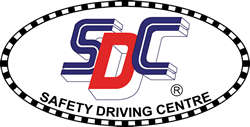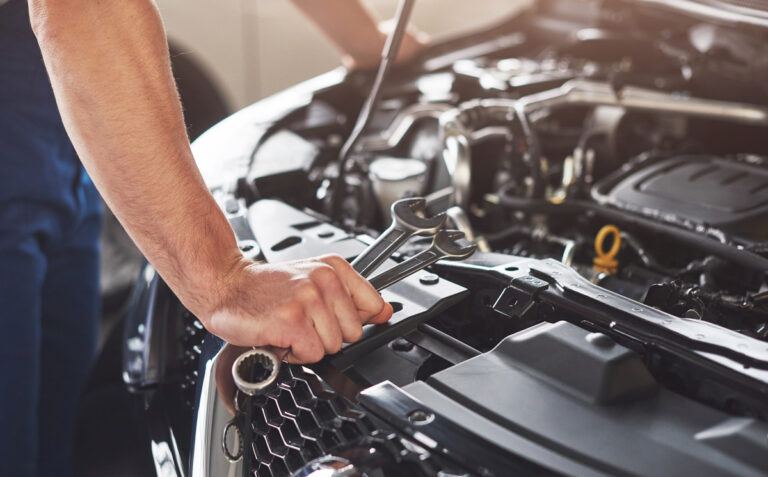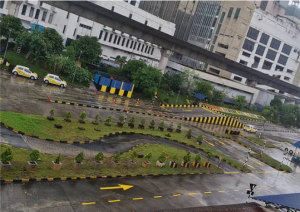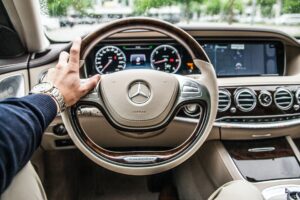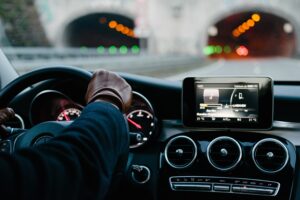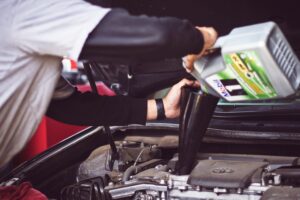In Malaysia, for safety reasons, most road users prefer driving a motorcar to a motorcycle. Besides, irrespectively whether they are staying in urban or rural areas, they are of the opinion that driving their own car is much more convenient and time-saving than using public transportation.
However, it is responsible for car owners to make sure their cars are in tip-top condition before they are embarking on their journey.
Therefore, Vehicle Preventive Maintenance or Vehicle Inspection Routine (RPK) should be conducted before starting the car, and this procedure requires a few minutes only.
VEHICLE INSPECTION ROUTINE (Motorcar)
They are three parts of the vehicle to be inspected:
(i) Road-Tax, PUSPAKOM’s Vehicle Inspection Disc (commercial vehicles only) Number Plates Of The Car.
(ii) Body Of Vehicle.
(iii) Engine Compartment.
(iv) Boot Compartment.
A quick and easier way of conducting an inspection of the car’s body is starting from the left side of the front windscreen and going around the clockwise direction and ending at the front left tyre.
ROAD TAX DISC AND CAR’S NUMBER PLATE
For those who are renting a car to drive from their friend/relative. They must check first the validity of the road tax disc of the vehicle and this important document is normally located at the top corner of the front windshield.
It is an offense for a Probationary Driving License (PDL) holder to drive the car if he/she did not display the ‘P’, stickers at the front and the rear top left windshield of the vehicle. So, make sure the two ‘P’ stickers are displayed prominently at their rightful places and are still visible.
Besides, the front-back number plates must also be inspected for readability and checked and replaced for any missing letters on them.
THE BODY OF THE VEHICLE
The elements to be inspected are the glasses, metal parts, rubber components, and plastic covering of signal and light bulbs.
The car’s front-back windshield glasses and also all window glasses should be cleaned so that they are clear for visibility. For safety reasons, the glasses should not have even a hairline-cracks on them.
The vehicle body should be thoroughly checked for any dents in the following areas :
(a)front-back bumpers (b)four side doors (c) the bonnet and the booth of the car.
This is because any dents might cause the car’s doors to be misaligned and they may pop open while your car is in motion.
The rubber of the window wiper blades should be checked for any cracked or torn.
This is because only the soft wiper rubber blades would be able to wipe off the water completely when driving in the rain.
TYRES ( including the spare tyre)
The car’s tyre should be checked for tread depth, air pressure, and physical conditions.
Nowadays, tyre tread depth easily can be checked by looking at the indicator wear bars which is embedded between the tread ribs at 1.6 mm. The tyres should be changed if they have worn out beyond this indicator.
Tyre air pressure should be filled according to the vehicle manufacturer’s specifications. Typically, this Table of air pressure recommendations is placed on the side of the driver’s door.
The tyres should be also checked by examining the rim and nuts of the tyres. The four tyre’s nuts must be tight and the general physical condition of the tyres should look good.
ENGINE COMPARTMENT:
BATTERY
For the wet cell battery, it must be checked for sufficient battery water level in its chamber.
However, most car battery nowadays is fitted with dry cell battery without the driver’s need to worry about the battery level.
Some battery brands make it even easier for car owners by just requiring them to look into a small opening at the top of the battery where the color codes in it would be shown the condition of the battery.
( colour code indicators: green= good, black =recharge, and white= replace)
Besides, the positive and negative terminals of the battery must be checked so that they are tightly connected by the cables for a smooth supplying electric current to various electrical components of the car.
The radiator water level can be checked by opening the radiator cap to see its water level. However, do not attempt to open it when the car has been driving for a distance and the cap is hot to touch, instead, the water level of the radiator could be checked for sufficiency by looking at the indicator level of the Reserve radiator water container.
It is a good practice at the same time to check the water level at the windscreen wiper water container for sufficiency.
Make sure the radiator hose is still firm and no leakage of water could be seen or moisture marks on the outside of the hose.
ENGINE OIL
The engine oil could be checked by pulling the dipstick out. Then use a piece of tissue/ clot dipstick to wipe it clean, then put the dipstick back in its original place. Pull it out again and ensure that the oil level is between the maximum and minimum marking.
Brake fluid can be checked by looking at the Brake fluid container. The brake fluid is ideally should be at maximum marking level as indicated in the container.
ALTERNATOR BELT
The alternator belt is normally located on the front or side of the car’s engine. It can easily be checked by using a thumb to test its elasticity and at the same time feel the rubber surface for any cracked or frayed after prolonged driving.
BOOT COMPARTMENT
There are emergency equipment comes with a new car delivered to you from your car dealer.
The basic and standard emergency equipment in the car’s boot is as follows:
(1) Jack and pivot (2) Lug wrench(3) Emergency reflective triangle(4) A pouch that contains tools like a screwdriver, pliers, and a spanner. (5) First aid kit.
All this equipment must be examined so that they are still in good working condition.
It would be useful to have a fire extinguisher on hand too; in case of the car caught fire due to an overheated engine or an electrical short circuit.
In conclusion, the practice of routinely inspecting your vehicle before embarking on a journey helps you drive safely on the roads. Not only that, these quick visual and physical inspections in the long run would help you save the cost of costly repairs and thus, increase the car’s longevity.
